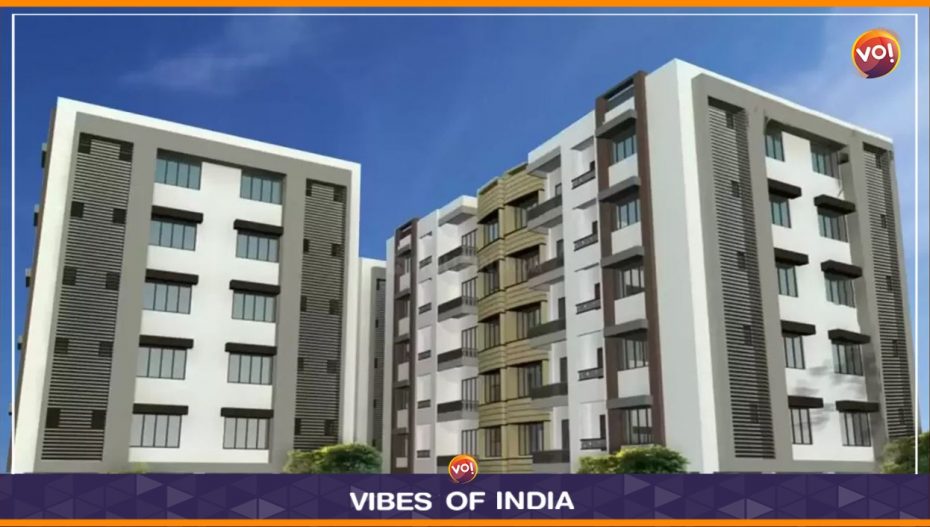Located in the densely populated Eastern part of the city, Ahmedabad’s closed mill lands have been lying fallow for decades. Unlike Mumbai, which has turned its old mill properties into centres of booming economic activity, Ahmedabad has failed to unlock the value of these large swaths of land.
That may be changing, with large corporates taking up redevelopment projects in these areas. “The Metro and BRTS now provide easy connectivity to these parts of the city,” says Madhu Bharti, Professor of Urban Planning at CEPT University. “Redevelopment of the mill lands is ready to take a quantum jump.”
Professor Bharti teaches a post-graduate course in Urban Housing at CEPT University, where students are required to propose optimal development plans for real land parcels in the city. This year, three of the project reports deal with closed mill property and these were part of the CEPT Winter Exhibition 2022 last week. The projects conclude the best way to go is to build affordable housing units in these areas, along with industrial plots.
Mohammad Tariq has prepared a report on the redevelopment of the 14.5-hectare Anil Starch land parcel in Asarwa, which is close to the projects currently being promoted by Arvind Smartspaces, a subsidiary of textile major Arvind Mills. “Given the size of the property, using it only for housing is infeasible. The market would not be able to absorb it. We have proposed a mixed re-development plan, starting with the sale of small industrial plots, which can serve to finance the residential and commercial construction,” he says.
Tariq’s analysis concludes that 50% of the land should first be developed as industrial plots of 300-1,000 square feet area for micro enterprises, of the kind already being developed at the nearby site of Ashoka Mills. These would serve as warehouses and also small non-polluting manufacturing units consisting of one or two machines making mechanical parts. Such units usually operate in shacks located in slum areas and many owners can afford to go in for a pucca building.
The ongoing sale of industrial units would finance the construction of four road-facing commercial blocks of four storeys each, with 330 offices and retail units. The residential portion of the project would consist of 21 towers of 14 storeys each, making up 2,500 dwelling units. The residential units would compare with those at the nearby Arvind Aavishkar project, where 2 BHK apartments, of 500 sq feet carpet area, are being sold for around Rs 30 lakh. The commercial portion is partly modelled on the Arvind Megaestate project, located 1.4 km away.
Tariq believes this type of redevelopment would create an economic boom in an area that has traditionally been populated by migrants: “It would be a win-win situation for everyone. Enterprises located here would have a competitive advantage since skilled labour is available. Workers can afford to live a decent life here, with affordable housing. High end retail like Croma is already present here and there is room for more, given the population density.”
Gayatri VV, another post-graduate student at CEPT, has taken up a project for the redevelopment of the 14.3-hectare Shri Amruta Mill in Saraspur. Unlike Anil Starch, this property comes with an encumbrance in the form of 30 millworker families living inside. The rules and regulations covering this zone are stricter than those that govern the Anil Starch property. The FSI here is 1.8, compared to 2.7 at Anil Starch and the height of buildings is restricted to 45 meters.
Besides, the real estate developer here is required to hand over 40% of the land to the municipal authorities for public use. “The rules and regulations here require a different redevelopment strategy,” says Gayatri.
Gayatri has proposed 60% of the project be used for housing under the Pradhan Mantri Awas Yojana, under which 640 dwellings of 30 square meters area will be made available to economically weaker sections (EWS) for as little as Rs 3 lakh. This will entitle the developer to subsidies. Along with EWS housing, there would be 370 units of up to 65 square meters dwellings for middle income groups. The remaining 40% can be used for commercial and retail.
Gayatri has estimated the cost of the project to be Rs 575 crore. If completed within seven years, it is expected to fetch a return of Rs 1,000 crore, with break-even in the first quarter of the fourth year.
Also Read: Bill To Legalise Unauthorised Construction Will Be Presented In 1st Session Of Assembly













